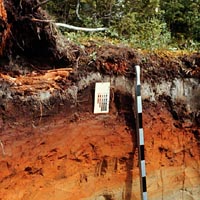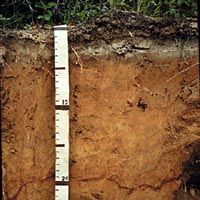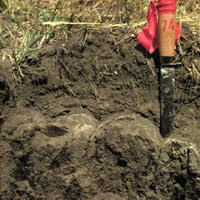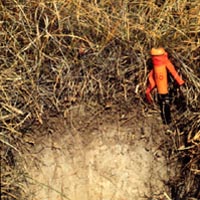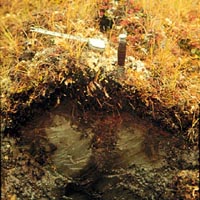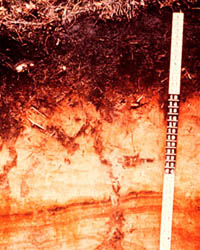|
|

|
| The Canadian Classification (Taxonomy) organizes soils first into Orders, then Great Groups, then Sub-Groups, then Families and finally Series or Associations. | |||||||||||||||||||||
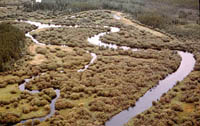
Soil Order The highest or broadest level of classification is the Order reflecting which of the soil forming factors had the most influence of soil formation. Nine orders are recognized with specific horizon characteristics. Within Saskatchewan most of the soil orders are represented, although the main agricultural area is dominated by soils of the Chernozemic Order. The northern agricultural/forest transition areas are mainly Luvisolic soils and boreal forest soils are dominated by Brunisolic soils. To the far north, the subsoil rarely thaws so that we have permafrost giving rise to Crysolic soils. Wherever there is standing water and restricted drainage, Organic soils form, usually in the wetter forested regions. Gleysolic soils develop in areas that are subjected to periodic waterlogging. Parent material that contains a high proportion of soluble salts give rise to Solonetzic soils. What kind of soils would you expect to find in the area shown in the graphic above? The following lists the main Orders with their dominant characteristics:
| |||||||||||||||||||||
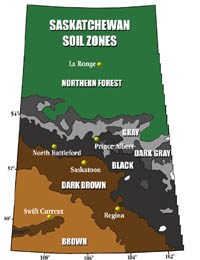
Great Group Within an order, the next highest division give us the Great Groups. Delineated on the basis of profile characteristics which have resulted from soil formation. Examples of great Groups within the Chernozemic Order are Brown, Dark Brown, Black and Dark Gray. A reflection of the dominant soil forming factors of climate and vegetation, the soil zones are essentially an area map of the Great Groups of Chernozemic soils and one Great Group of the Luvisolic Order. | |||||||||||||||||||||
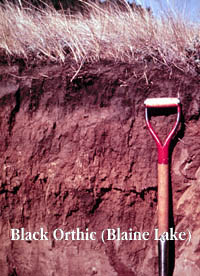
Subgroups There are four main subgroups for each Great Group of the Chernozemic Order. Sub groups are based on how strongly the soil profile is developed as a result of slope position and the amount of moisture that penetrates the profile.
| |||||||||||||||||||||
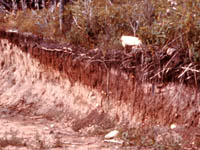
Soil Series This grouping is differentiated on the basis of observable soil characteristics that can be mapped. These soils usually have the same arrangement of horizons with similar minerals and organic mater. The colour, texture, horizon thickness, and pH should all be similar. Series are often named after places. As we move down a slope from top to bottom we find distinct profile types because lower slope areas collect water that runs off from the upper slope. More water means more profile development i.e. deeper and more distinct horizons. In Saskatchewan and Alberta, the soils are formed on rolling glacial till deposits. Thus within one field we may find many different profiles types. To simplify the task of mapping the entire group of soil profiles that have formed from the top to the bottom of a slope (catenary series) are given the same name provided they all belong to the same soil zone and have similar parent material. Each soil zone has a number of associations e.g. in the Dark Brown zone around Saskatoon we commonly find the Bradwell series formed on sandy parent material and the silty Sutherland series formed on glacial-lacustrine material. | |||||||||||||||||||||
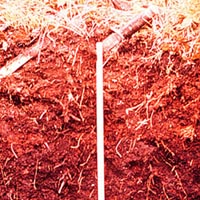
Organic Soils These soils are classified differently from minerals soils and have their own Order. Organic horizons are recognized on the basis of how well the plant material is decomposed.
|
|||||||||||||||||||||


